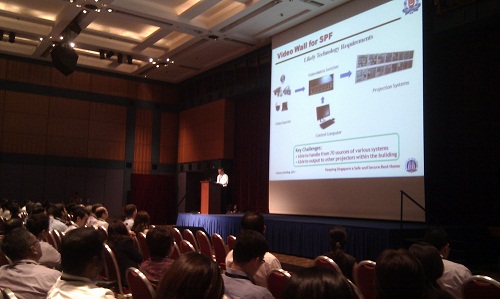
Presentation by Dr Lim Kia Yong, director of IT division at MHA, at IDA’s 2011 public industry briefing on IT budgets
The Singapore government is expected to spend S$1.1 billion on IT services in the upcoming 2011 financial year.
Excluding the School Standard ICT Operating Environment (SSOE) project, which cost around S$850 million, the government’s FY2011 IT budget is close to last year’s spend of $1.12 billion.
In an industry briefing for vendors today, IDA assistant CEO James Kang laid out examples of upcoming infocomm projects that have been budgeted for in the coming year.
For example, projects like National Environment Agency’s (NEA) “Smart Environment System”, which is expected to cost between S$3 to 10 million.
This project wil use real-time sensors to collect environmental data like PSI ratings and automatically display such information to the public via a public portal.
Another example of a data integration project is Health Science Authority’s (HSA) data analysis and intelligence system, budgeted for S$500,000 to S$3 million. It aims to use business intelligence and data warehousing technologies to automate collection of data and collate trends and insights.
Data projects comprise just one segment of the budget pie.
There are also big infrastructure and system projects, like a totally new IT service centre for the Ministry of Manpower, scheduled to be built at Bendemeer, estimated to cost more than S$10 million.
Another example is the Immigration and Checkpoints Authority’s (ICA) “Flexi-immigration clearance system”, estimated to cost between S$500,000 to S$3 million. This allows travellers to process their entry and exit out of Singapore via self-checking kiosks at our ferry terminals, similar to such kiosks at Changi airport.
According to IDA’s James, government projects provide “ample opportunity” for all vendor segments, including local SMBs, government-linked companies (GLCs), and MNCs.
In FY2010’s budget wrap-up, of the 647 projects given the green-light, 40 percent by value were awarded to MNCs, and the other 60 percent went to local companies.




